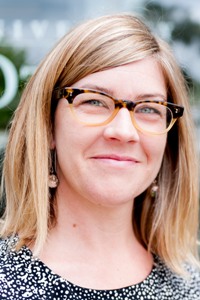Grantee: Amber L. Pearson

Amber L. Pearson
- Michigan State University
Dr. Pearson is a health geographer with a focus on social justice and intersections between spatial and social features of neighborhoods. Specifically, her research relates to aspects of the neighborhood built, physical and social environment that may bolster opportunities for a healthy life, often in the face of socioeconomic adversity. Her overall research goal is to understand the interactions between humans and their neighborhoods to improve health and wellbeing while paying careful attention to health inequalities and environmental justice. Neighborhood green spaces (e.g., parks) are one focal area of research for Dr. Pearson.
Dr. Pearson first became interested in how residential exposure to both green and blue space may foster better health outcomes in cities through work she conducted in New Zealand. Many green spaces in New Zealand are high quality, and access is fairly ubiquitous. Now based in Michigan, Dr. Pearson has turned her attention to Detroit, where recovery from decades of disinvestment in its parks is under way. Dr. Pearson's current project aims to understand how high-quality green space may influence physical activity, stress, and cardio-metabolic health among Detroiters. The longitudinal study will capitalize on an upcoming natural experiment involving the ecological restoration of unmaintained parks to grassland meadows. Participants will be measured at baseline then annually for three years post-restoration. Measures include individual-level visual/auditory exposure (e.g., greenery, birdsong) to green spaces and objectively measured health behaviors and outcomes (e.g., physical activity, salivary cortisol, BMI, blood pressure, hip-to-waist ratio, C-reactive protein, and A1C). Understanding the role of ecological restoration on health will provide the unique opportunity to inform replication, scalability, and generalizability for cities managing park resources in low-income neighborhoods. The findings will be vital in the development of policies needed to mitigate pervasive socioeconomic disparities in obesity, Type 2 diabetes, cancer, and cardio-metabolic health.
I first became interested in how neighborhood green spaces may improve health through my work in New Zealand, where green spaces tend to be high quality and accessible. Now I live in Michigan, where Detroit is recovering from decades of disinvestment in its parks. While improvements have been made, neighborhoods remain where the city's parks renaissance has not reached. This study allows us to test how restoring parks to be vibrant green spaces may contribute to health in underserved communities.”
Selected Grants
| Project Title | Grant Number | Program Director |
|---|---|---|
| Impact of ecological park restoration on health in low income neighborhoods: A natural experiment | 1R01CA239187-01 | David Berrigan |
To request edits to this profile, please contact us at ncidccpsbrpadvances@mail.nih.gov.

